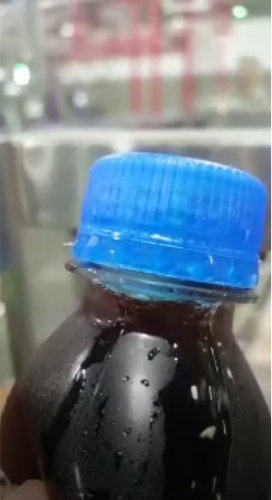Product leakage is one of the most critical issues in the beverage industry.
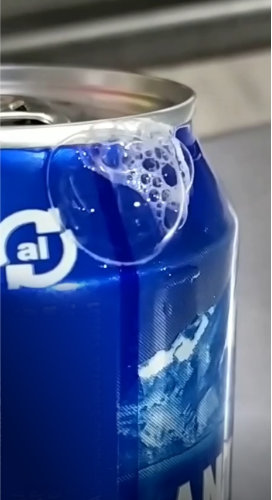
Not only does it result in half-empty products, but it also affects production, packaging, and customer safety. Leaking containers can clog conveyor systems and machinery, soak cardboard packaging, and even pose a health hazard to consumers.
Furthermore, leakage can have a significant financial impact on companies, leading to product waste, lost revenue, and damage to reputation. Additionally, leakage not only harms the industry but also the environment by wasting resources.
To help prevent leakage and protect your business, it is essential to find the right leakage inspection solution. But with various technologies and competitors available, it can be challenging for quality assurance professionals to navigate the options. In this blog post, we will provide a comprehensive overview of the available technologies to help you make an informed decision.
Let’s examine current technologies for leakage detection and their trade-offs.
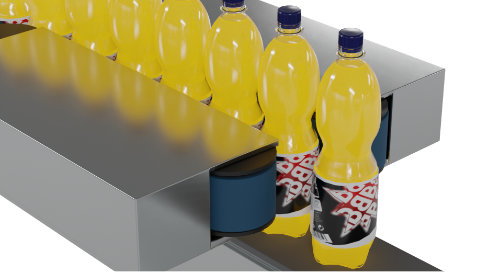
Great for PET bottles
+ accuracy
+ high production speeds
– high investment
– high operation costs
Squeezers — accurate but high in operation costs due to complex mechanics
With moving belts, motors and pressure on the product, Squeezers are an accurate but expensive solution.
Don’t get me wrong, Squeezers have plenty of advantages. For example, a physical measurement by pressing on the container, allows for very accurate results even on high speeds (120,000 containers per hour).
And because of the application of two belts transporting the containers, no additional guiding of the products is necessary.
However, Squeezers have quite a heavy construction, with its motors, belts and other wear and tear prone parts.
Pressing on eventually leaking containers pushes liquid from the product out of the bottle, resulting in hygiene issues on the conveyor and the inspection system.
All together resulting in high maintenance and cleaning expenses. Accompanied by a high first investment and significant space requirements.
Proximity Sensor — simple and cheap, but not the most accurate
Proximity Sensor systems determine the internal pressure or vacuum of a container by measuring the concave/convex bulge of the container’s cap or lid. However, as an indirect measurement, the resolution is limited and not as accurate as other solutions.
To highlight the benefits, Proxi systems are a cheap and simple solution. Especially useful on food cans or bottles with a relatively large and flexible caps.
When inspecting cans for leakage, there are a few downsides to consider. One is the “memory effect,” which refers to the bulge of the cap or lid not flattening out, even with a decrease in pressure caused by a leak. This is particularly prevalent in beverage cans. Additionally, the measurement is less accurate because it can only be done on the lid, which is the thickest and least flexible part of the can.
Another downside to Proxi systems is that the inspection can only be done on the top side of the can. As a result, cans may need to be turned again after printing and date inspection, making it difficult to perform both tasks simultaneously.
Additionally, the pull-ring on cans can interfere with the measurement, depending on the rotation of the can. To ensure accurate inspection, proper product guiding is essential.
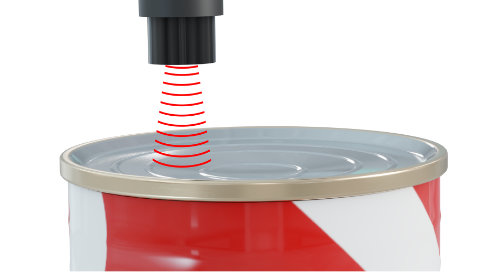
Great for food cans
+ cheap
+ easy setup
– accuracy
– limited application
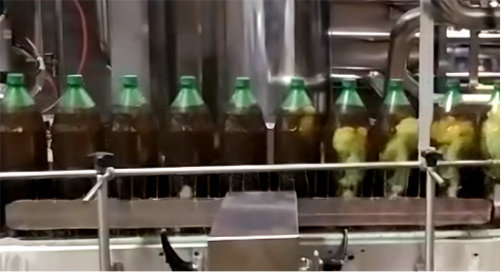
– limited use
– hygiene issues
– additional inspection required
– waste of resources
Ultrasonic transducer — as of now the only reliable solution for REF PET bottles
Ultrasonic transducers are currently the only reliable solution for inspecting leaks in PET bottles. The process works by using ultrasonic vibrations to entice CO2 bound in the product to foam up, increasing the internal pressure and forcing the product out of the container through eventual leaks. After a sufficient amount of time for the product to settle, these leaking containers can then be detected by a following fill level inspection.
However, this solution has a few downsides. One is that it only works on carbonated drinks and takes quite an amount of time for the product to settle back down to a measurable state before a leak can be detected by an additional fill level inspection.
To make this inspection reliable, a constant flow of water needs to connect the bottles with the ultrasonic transducer, resulting in additional resource costs.
The biggest downside, however, is that leaking bottles release a spray of product covering the conveyor, nearby machinery, and neighbouring bottles until they can be detected and removed from production. This results in considerable cleaning efforts for the production line and can lead to unpleasant products reaching the customer.
Magnetic cap oscillation — state-of-the-art solution, only for a specific application
An electromagnetic signal is used to oscillate the crown cap, creating a distinctive sound, which then can be recorded by a dedicated microphone and evaluated to detect an intact seal.
If you are filling beer or CO2 containing soft drinks, this is the solution for you.
The big advantage here is the precise and reliable measurement. Even the smallest defects on the sealing surface alternates the responding sound in a measurable way.
The downside is, conditions like the material of the cap can greatly influence the accuracy, that’s the reason these systems are specialized on crown caps. Ambient noise, distance, and electrical interference might also influence the measurement, but can be overcome by proper design and calibration.
Other than that, this system is an easy retrofit for existing lines, requiring nearly no modification of the line.
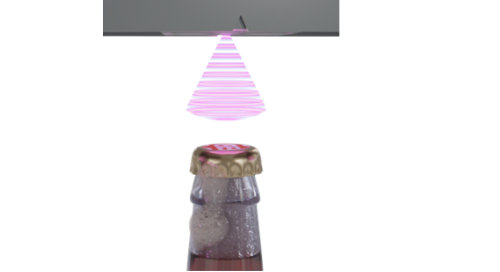
Great for crown caps on CO2 containing glass bottles
+ easy integration
+ accuracy
– only crown caps
Precise, Fast and Gentle: A Innovative Leakage Inspection for Flexible Containers

PULSE leakage inspection systems offer a compact and easy-to-integrate solution addressing a wider application without complex measurements or maintenance heavy constructions.
An innovative way of inspecting the pressure on various flexible containers containing CO2 or LN2, like beverage cans or PET bottles, is provided by the BBULL PULSE. Using a probe to gently tap the container and “feel” the pressure in a fracture of a second, without damaging the container.
The probe provides detailed analogue data about its acceleration and deceleration behaviour, which can be analysed and processed by the inspection software.
One of the key features of this leakage inspection system is its analogue pressure measuring method, which measures on the thinnest part of the can, the side wall, resulting in a more accurate measurement. Making it on par with technologies like Squeezers, but with a way smaller impact on the line and way lower maintenance costs. Leading to an excellent cost-benefit ratio.
The system is available for speeds up to 100,000 containers per hour.
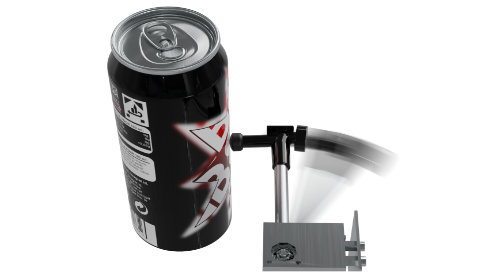
Great for flexible containers
+ easy setup
+ accuracy
– only on flexible containers
The small footprint of the PULSE system make it ideal for tight spaces or as a retrofit for existing lines. An installation after the labeller is also an option.
Another benefit of the PULSE Leakage Inspection System is its minimal maintenance requirements. It has no motor and thus nearly no wearing parts, meaning that maintenance work is kept to a minimum. This ensures that the system runs smoothly and efficiently for a prolonged period of time.
Overall, the PULSE Leakage Inspection System is an ideal option for quality assurance professionals in the beverage industry who are looking for a reliable, efficient, and gentle way to inspect their containers. With its high-speed capability, minimal disruption to the production processes, and minimal maintenance requirements, the PULSE system is a smart choice for any company looking to improve their operations.
